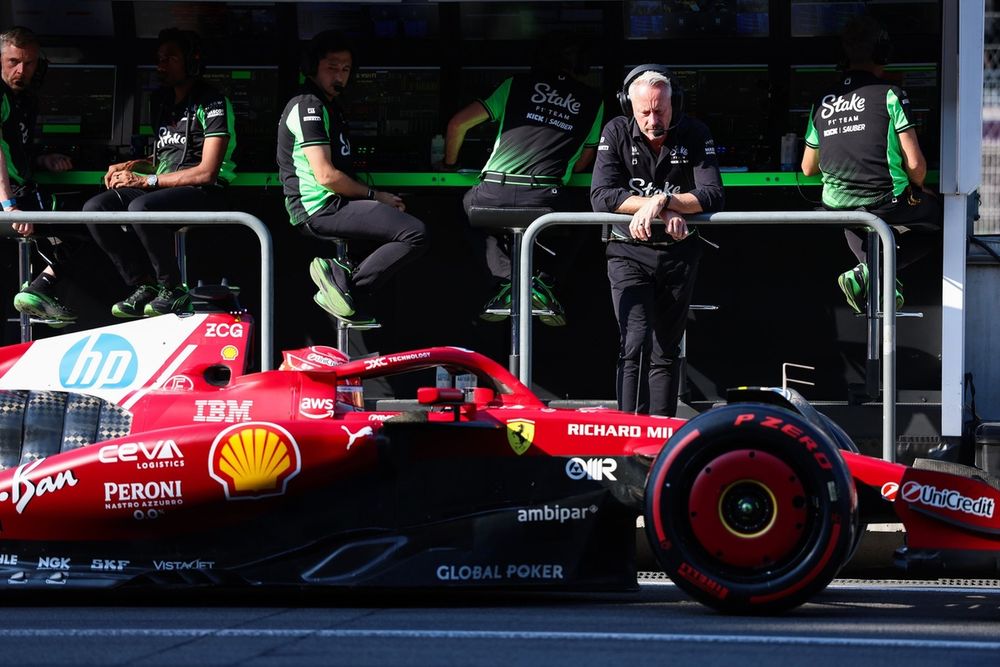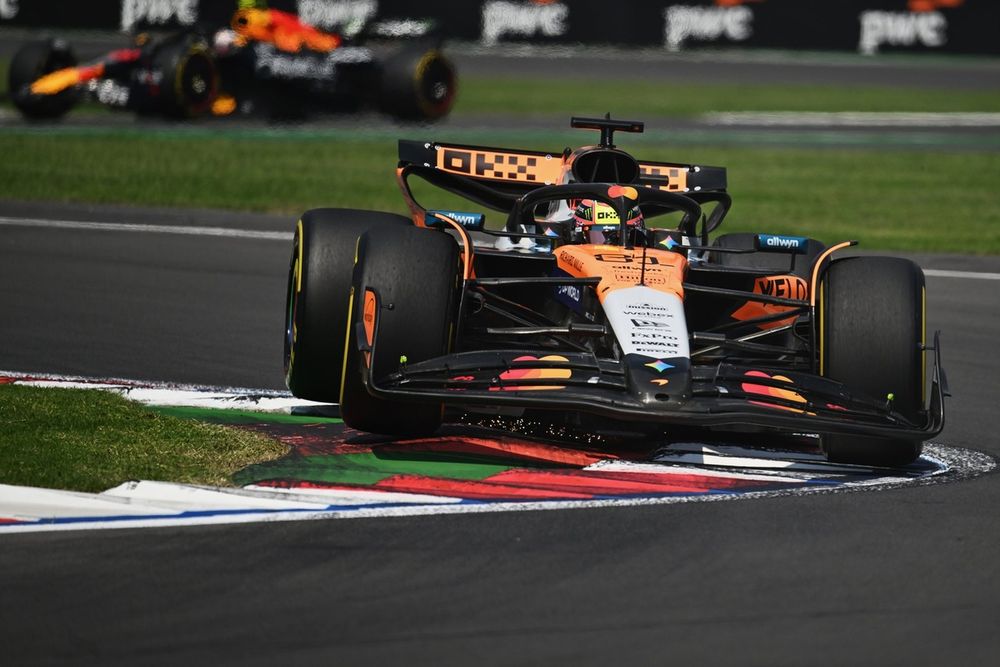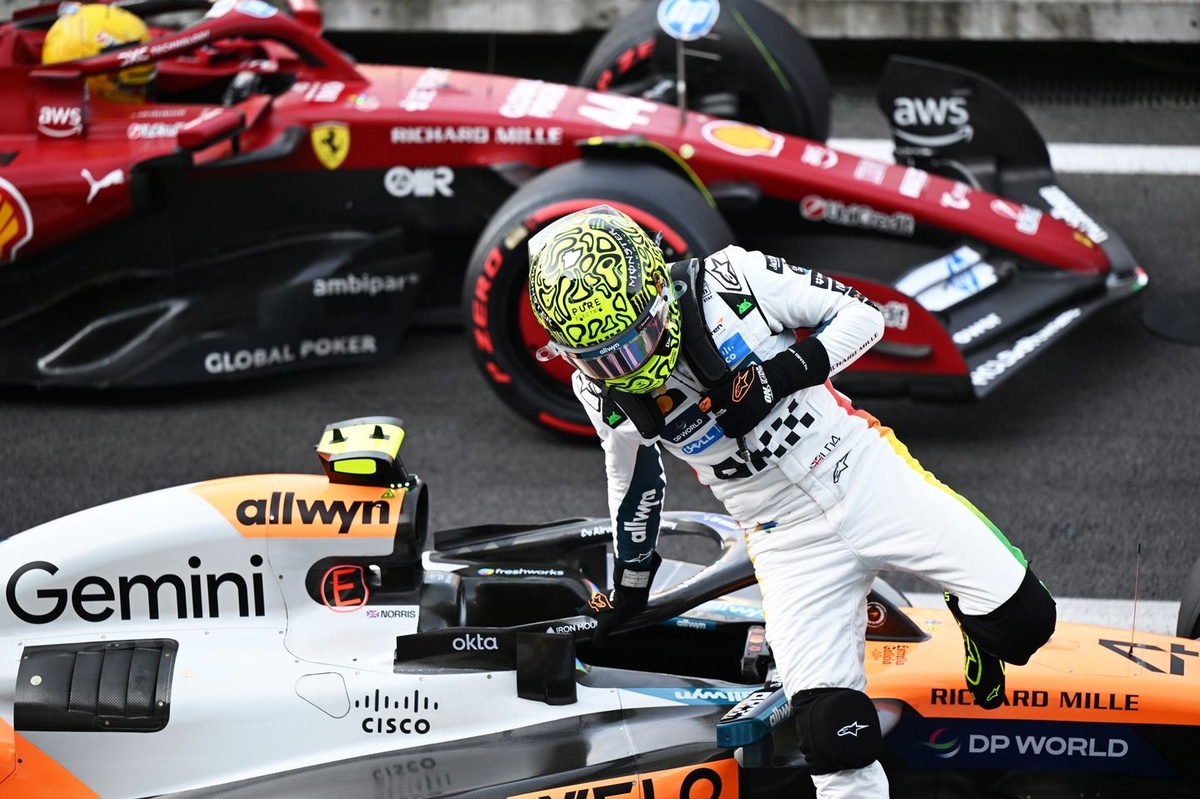When it comes to strategies for the Mexico Grand Prix, most Formula 1 competitors are expected to run a one-stop.
Similarly to its Austin choices, Pirelli didn’t pick consecutive compounds for this weekend’s event – but went one step softer on a less demanding track with fewer high-speed corners, selecting C2, C4 and C5 rubber. This also helps with the lack of grip, with Pirelli F1 boss Mario Isola describing Autodromo Hermanos Rodriguez as “the track with the lowest grip of the championship”.
Still, there likely won’t be enough tyre degradation to warrant a two-stop, despite a similar race time overall – Isola believes the time lost in traffic and the way tyres overheat behind rival cars will be detrimental to this strategy.
When it comes to one-stops, all compounds can realistically be used in either stint, although the medium will provide a more flexible opening stint than the soft while proving more competitive than the hard – especially at lights out.
“The medium is probably the most popular choice for the start of the race,” Isola said. “I cannot exclude someone on the soft, because the delta between the soft and the medium here is around 0.7s. It is a decent delta, and it means that you have some grip more that you can spend in the first couple of laps.
“The soft was working quite well also in long runs. It has to be managed, you cannot push 100% with the soft, but it is a tyre that could complete a stint in the race. So, medium at the start, and probably they see how far they can go with the medium to decide to move on to the hard or to the soft.”

Charles Leclerc, Ferrari
Photo by: Andy Hone/ LAT Images via Getty Images
The hard tyre should still be a viable option, particularly for the second stint.
“The delta lap time yesterday was around one second per lap to the medium, so if you consider that this delta in race condition is half, it means that we have a hard that, in race condition, is only half a second slower than the medium, but with a much better consistency,” Isola detailed.
Asked whether someone could pit under a first-lap safety car and complete the remainder of the race on a single set of hard tyres, the Italian replied: “That’s a good question. I cannot exclude it.
“Maybe someone could do that, taking the risk of degradation on the hard at a certain point. Because in that case, with the wear, you start losing temperature. And if you lose temperature, the grip is going down.
“A common feedback on the hard was that they need to keep the temperature on the front, otherwise they have understeer. And if you plan a stint of 70 laps on the hard, I cannot exclude that at a certain point you start having degradation because of losing temperature, especially from the front.”
A key question will be what strategy championship leader Oscar Piastri can do to recover from seventh on the grid, with title rivals Lando Norris and Max Verstappen on pole position and in fifth respectively.

Oscar Piastri, McLaren
Photo by: Sam Bagnall / Sutton Images via Getty Images
McLaren team principal Andrea Stella believes what Piastri needs is “improving the driving”, following a tough start to the weekend, with the Australian lagging half a second behind team-mate Lando Norris in Q2 before lapping six tenths off in the decisive Q3.
By “improving the driving”, Stella means “interacting with the tyres in a way that we can use the strength of the car in keeping the life of the tyre [for a long time] and the degradation low”.
Interestingly, Stella has been disappointed with the hard compound so far and has indicated McLaren would lean towards using the softer rubber, potentially as part of a two-stop strategy if degradation is higher than expected.
What’s for sure is that nothing’s certain. “There’s a few things that I think all teams will discover tomorrow during the race, because nobody has done a long enough run to actually say, ‘this is certainly how the race will unfold’,” Stella pointed out.
In the end, even more than strategy, the start will be the decisive factor in the race. A straight of more than a kilometre means slipstreaming has a huge effect after lights out, and in the previous two runnings of the race, the polesitter lost the lead on lap 1.
Read Also:
Third-placed Lewis Hamilton will theoretically be ideally placed to benefit, with polesitter Norris likely at a disadvantage.
“I definitely want to be racy tomorrow,” Hamilton said. “I don’t have anything to lose, but he does. We’ll be quite aggressive.”
Norris has been warned.
Additional reporting by Stuart Codling and Filip Cleeren
We want to hear from you!
Let us know what you would like to see from us in the future.
– The Autosport.com Team

